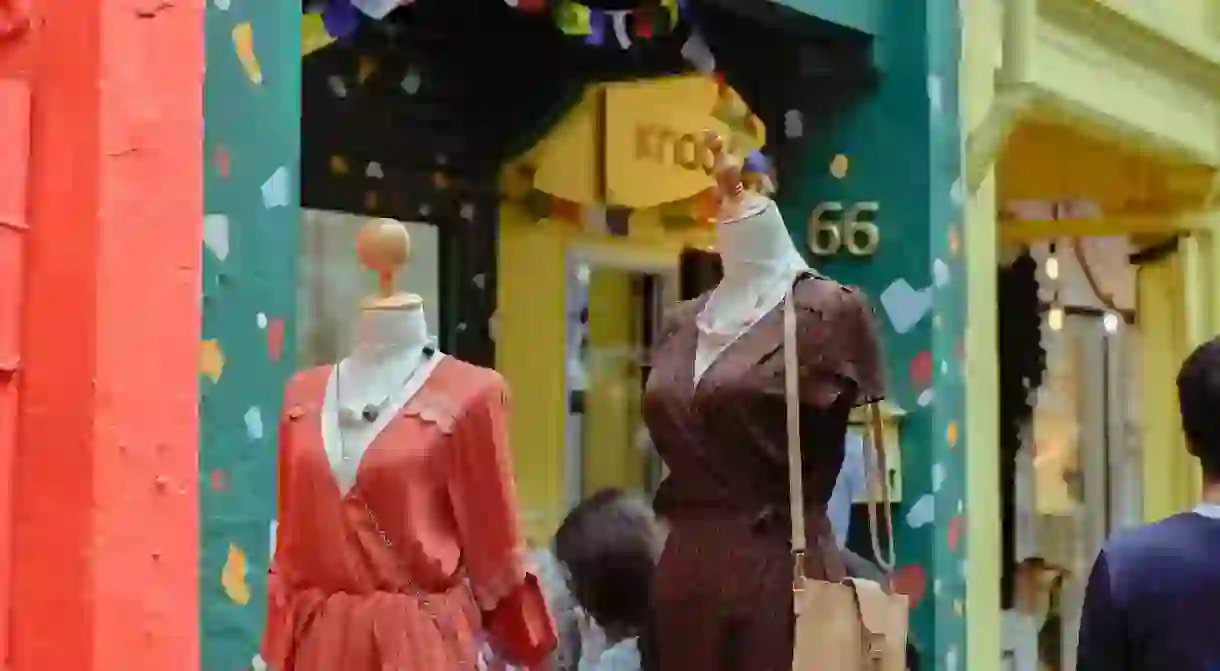Extraordinary Fashion Designers Reinventing Traditional Dress

Many cultures around the world have traditional costumes that go back thousand of years. Contemporary fashion designers are frequently inspired by and proud of this heritage, yet they also want to modernize and reinvent traditional dress. From hijabs to kimonos to saris and more, here is a list of today’s incredible designers who honor traditions while still doing things their own way.
Did you know – Culture Trip now does bookable, small-group trips? Pick from authentic, immersive Epic Trips, compact and action-packed Mini Trips and sparkling, expansive Sailing Trips.
Asiya Bareeva
An emerging fashion designer from Russia, Asiya Bareeva has, so far, been inspired by the multiculturalism found within her country. With many different faiths, including Buddhism and Islam, represented in Russia, Bareeva often designs beautiful garments based on the cultural clothing of those communities. Known for designing pieces that feature layers not only of varying fabrics but also prints, her clothing often uses a combination of neutral colors and those adorned with incredible embroidery. Bareeva also creates jewelry and headpieces using Japanese polymer clay.
Barjis Chohan
To create a fashionable line of clothing that would appeal to Muslims everywhere, Barjis Chohan created her eponymous label, Barjis. A well-known and respected fashion designer, taking the world by storm with her ‘luxury modest’ fashion, the London-based, multi-awarding winning Chohan designs beautiful clothing in both neutral and bright colors that appeal to not only Muslims but women from a variety of backgrounds. Her sleek, modern designs — including the abaya (a robe-like dress) and hand-painted scarves — allow women to cover their bodies as much as they would like without sacrificing style.
Hwang Yi-seul (Dew Hwang)
Hwang Yi-seul, who is also known as Dew Hwang, is known for her designs that reinvent the Korean hanbok. The hanbok is a colorful type of dress that dates backs thousands of years and consists of long skirt or trousers and a cropped jacket (or jeogori). By putting a modern spin on this iconic dress, Hwang Yi-seul created her line, Leesle — named after the people who made traditional Korean dresses —, to showcase the history of the hanbok and incorporate elements of it into everyday, casual pieces for both men and women. From casual to elegant, from light to bold colors, Hwang’s clothes are for modern people looking to embrace their past.
Iman Aldebe

Born in Sweden to Jordanian parents, Iman Aldebe is a Muslim designer who has always had a passion for fashion. She began studying fashion design as a teenager, and later she began to think of ways to reinvent both the hijab, or headscarf, specifically and Muslim fashion in general. Aldebe is known for her headscarves and uniquely styled, haute couture turbans that are proving popular with women all over. Not everyone was pleased that Aldebe was finding alternatives to the traditional hijab, but she didn’t let it stop her. She has designed hijabs for Muslim Swedish police officers, and she is currently working on a clothing line for men and women.
Jotaro Saito
Starting out in the business when he was 27, Kyoto-born Jotaro Saito is known for his modern take on the kimono, a traditional Japanese dress — a robe-like garment that is held closed with a sash, or obi — that, today, is usually worn during special occasions. Honoring the traditional techniques used to make kimonos, Saito updates them using richly patterned fabrics adorned with an array of bold and neutral colors and other contemporary twists. Saito’s kimonos can be elegant patterns or even fun and quirky — one style from his Spring/Summer 2015 line featured dogs in bright colors.
Marwa Atik
Born and raised in sunny California to Syrian parents, Marwa Atik — along with her sister Tasneem Atik Sabri — founded the company Vela in 2009. Realizing the need for more trendy hijabs, especially for the modern, Westernized Muslim woman, Atik began designing veils, or headscarves — with unique adornments such as zippers, ruffles, and lace — in beautiful colors. In addition to adding fun, fashionable embellishments, Atik also designs beautiful patterns for her stylish scarves, including current favorites like the ‘Black Metallic Henna Print’ and the ‘Mosaic Print.’
Purvi Doshi
Inspired by her Indian and Gujarati heritage, Purvi Doshi created her own clothing label of the same name. An award-winning designer — she received the Emerging Designer award from Grazia magazine —, Doshi is known for her use of traditional crafting techniques such as khadi (hand-woven cloth) in the styles of today. Her beautiful and colorful pieces of clothing, which include kurtas (straight-cut long shirt or dress), are often embellished with floral patterns, embroidery, and textures. Both celebrities and everyday women can be seen wearing Doshi’s designs.
Rimzim Dadu

Rimzim Dadu, who grew up in Delhi, has always been around fashion, as her family ran, and continues to run, an export clothing operation; therefore, it should come as no surprise that Dadu would make a career in the fashion world. A designer of everything, including her own textiles, she is known for putting a creative spin on her creations, which include saris — a traditional South Asian garment made with a continuous piece of fabric (up to nine yards) that is wrapped and draped around the body. Some of Dadu’s more unique pieces include saris made from chiffon that’s been cut into strips and made into cords.
Yoshiki
A rock star in the heavy metal band X Japan and with many successes, due to his music career, under his belt, Yoshiki can now add ‘fashion designer’ to his résumé. He recently showcased his first collection of fashion-forward kimonos — or Yoshikimono, as his brand is known. While most kimonos are traditionally made with silk fabric, Yoshiki’s designs, which feature floral prints, animal prints, and some geometric patterns, use a thinner fabric, making them sheer — unlike their traditional counterparts.













